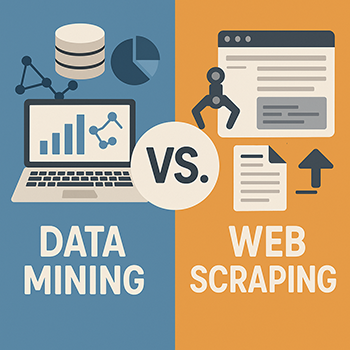Table of Contents
ToggleThe digital world is ever-changing, and one of the most exciting developments is the ability to convert images into HTML using artificial intelligence. This technology is not only making web development easier but also sparking creativity for designers and developers. In this article, we’ll explore what “image to HTML AI” means, how it works, and its practical benefits. We’ll also cover the pros and cons, answer frequently asked questions, and provide useful tips on how to get the most out of tools like an image to code converter, tools for jpg to html conversion, and more.
A Simple Guide: What Is “Image to HTML AI”?
At its core, converting an image to HTML using AI means transforming a visual design into a working web page. Imagine you have a beautifully designed graphic or a mockup of a website. With the help of AI, you can automatically generate the HTML code that builds that design on a web page. This process is often referred to when people say “convert image to html” or use an “image to code converter.”
The technology behind this breakthrough uses machine learning to understand the layout, colors, fonts, and spacing in an image. Once it “learns” these details, it produces code that web browsers can interpret, bringing the static image to life on the internet.
How Does It Work? The Magic Behind the Conversion
Breaking Down the Process
- Image Analysis:
The AI begins by examining the image you provide. It identifies various elements like headers, buttons, text areas, and even images within the image. This step is crucial for determining the layout of the final webpage. - Pattern Recognition:
Using learned patterns from previous data, the AI predicts the structure of your design. Whether it’s a simple design or a complex one, the AI works to understand where each piece should go. - HTML Code Generation:
After analyzing the image, the AI starts generating HTML code. This code includes tags for text, images, and other components that reflect the original design. Tools like an image code generator are designed to perform these tasks quickly and efficiently. - Refinement and Customization:
Once the initial code is generated, developers can fine-tune it. Some tools even offer interactive features, letting you adjust the layout or styling further. This is especially helpful if you need to convert a jpg to html or perform a more detailed jpg to html conversion.
Real-World Applications
- Designers and Developers:
Professionals can save hours of manual coding by letting AI handle the initial draft of their webpage. Instead of starting from scratch, they can focus on enhancing and personalizing the generated code. - Rapid Prototyping:
For startups and small businesses, quickly visualizing a website’s design is key. Converting an image to HTML lets teams test ideas rapidly and make adjustments based on user feedback. - Learning and Education:
Students and hobbyists can benefit by seeing how designs translate into code. This not only demystifies web development but also encourages more people to experiment with technology.
The Human Touch: Why This Technology Matters
Making Technology Accessible
The idea of an “image to code converter” is a game changer because it bridges the gap between creative design and technical implementation. Not everyone is comfortable with coding, and sometimes a beautiful design can get lost in translation when developers have to write code manually. This tool is like having a translator that speaks both the language of design and the language of HTML.
Empowering Creativity
Instead of getting bogged down by the technicalities of HTML, designers can let AI do the heavy lifting. They can then focus on the creative side of things—choosing the right colors, fonts, and overall style that best represents their vision. This is particularly useful when you want to convert an image to HTML quickly, as it streamlines the process while still leaving room for creativity.
Fostering Innovation
With these tools, anyone with a good design can see it come to life on the web. Whether you’re interested in a jpg to html conversion or just curious about how an image code generator works, this technology invites experimentation. It opens up a world where art meets technology, fostering an environment where innovation is accessible to everyone.
Pros and Cons: Weighing the Benefits and Challenges
Pros
- Time Efficiency:
Converting images to HTML manually can be time-consuming. AI-powered tools significantly reduce the time needed to generate a functional webpage, allowing for rapid prototyping and faster project turnaround. - User-Friendly:
These tools are designed to be intuitive. Even if you are not a coding expert, you can use an image to code converter to get a solid starting point for your website. - Enhanced Creativity:
By taking care of the technical aspects, AI lets designers focus on the creative process. It’s easier to experiment with different designs when you can quickly see the results in code. - Cost-Effective:
Many platforms offer free services for basic tasks, like a free image to code converter or free options for jpg to html conversion. This makes it accessible for hobbyists, students, and startups. - Error Reduction:
Automated conversion can reduce the likelihood of coding errors that might occur when manually writing HTML, ensuring a cleaner, more functional output.
Cons
- Limited Customization:
While AI can generate a basic layout, it might not capture every nuance of a design perfectly. The initial code might require further refinement by a human developer to reach the desired level of detail. - Learning Curve:
For those new to the technology, understanding how to best use an image code generator might take some time. Even though the process is streamlined, there is still a learning curve associated with customizing and editing the generated code. - Over-Reliance on AI:
Relying too heavily on automated tools might lead to a lack of understanding of the underlying code. This could be a problem for those who want to develop their coding skills over time. - Quality Variance:
Not all tools are created equal. The quality of the HTML output can vary depending on the AI technology used. Some might struggle with complex designs, resulting in a need for manual adjustments. - Compatibility Issues:
Sometimes the generated code might not work perfectly across all web browsers or devices. Ensuring cross-browser compatibility can require additional testing and tweaking.
A Closer Look: Practical Examples and User Stories
From Design to Webpage
Imagine you have a high-quality image of a website design created in Photoshop or Sketch. You want to see this design live on the internet but don’t have the time to write every single line of HTML manually. By using an image to HTML AI tool, you can convert that design into HTML code in minutes. You simply upload the image to the tool, and within seconds, you have a working webpage layout.
Student Projects and Learning
For students studying web development, seeing the direct translation of a design into HTML code can be an enlightening experience. It demystifies the process of coding and provides a tangible example of how visual elements correlate with code. Tools like an image code generator not only simplify the learning process but also encourage further exploration into the mechanics of web design.
Business and Marketing
For small business owners, every minute counts. A quick jpg to html conversion can transform a static promotional image into an interactive landing page. This helps in testing various design elements without committing too many resources, making it easier to refine marketing strategies based on user feedback.
Exploring the Toolset: Popular Use Cases
Convert Image to HTML for Quick Prototypes
The main goal of these tools is to quickly convert an image to HTML. Whether you’re working on a new project or updating an existing site, the speed of conversion allows for rapid testing and iteration.
Image to Code Converter for Beginners
Many beginners are attracted to image to code converters because they remove the intimidation factor of learning a new coding language. These tools serve as a bridge, easing users into the world of web development without overwhelming them with technical details.
JPG to HTML Conversion Made Easy
The process of jpg to html conversion is particularly popular. Many designers create their layouts in image formats, and converting them to HTML is a natural next step. This approach allows for a seamless transition from concept to digital implementation.
Image Code Generator for Customized Results
Some advanced tools let users adjust parameters before generating the HTML. This level of customization ensures that the output closely matches the original design, reducing the need for extensive manual modifications.
Frequently Asked Questions (FAQ)
What is “image to HTML AI”?
Image to HTML AI refers to technology that uses artificial intelligence to convert visual designs (like images or mockups) into HTML code. This process automates the creation of web pages based on a given design.
How does an image to code converter work?
These tools analyze the layout, colors, and elements in your design. They then generate the corresponding HTML code, which web browsers use to render the webpage. Essentially, they “translate” your image into code.
Can I convert a jpg to html using these tools?
Yes, one common application is jpg to html conversion. By uploading a jpg image of your design, the AI can generate HTML code that mirrors the design. This is especially useful for quickly turning static designs into interactive web pages.
Is it possible to customize the output?
Absolutely. Many tools allow you to refine the generated code. Some even let you adjust settings before conversion. This ensures that the final product meets your expectations and matches your design closely.
Are there free options available?
Yes, several platforms offer free versions of these tools. You can experiment with a free image to code converter or try a free jpg to html conversion service. These options are great for learning and small projects.
What are the benefits of using an image code generator?
An image code generator saves time and reduces errors. It’s perfect for rapid prototyping, learning web development, and quickly bringing your designs to life on the web. It also makes the conversion process accessible to non-experts.
Do I need to know HTML to use these tools?
Not necessarily. While having some basic knowledge of HTML can help you fine-tune the results, many of these tools are designed for users with little to no coding experience. They serve as a starting point, and you can always edit the generated code later if needed.
How accurate is the conversion process?
The accuracy of the conversion depends on the tool you use and the complexity of your design. For simple layouts, these tools can produce nearly perfect HTML code. More complex designs might require some manual adjustments afterward.
Looking Forward: The Future of Image to HTML AI
The field of AI-driven web development is still evolving. As these tools improve, we can expect even more accurate and customizable results. Here are a few trends to watch:
- Improved Learning Models:
As AI models get better at understanding design nuances, the gap between the original image and the generated HTML will continue to shrink. - Greater Customization:
Future tools may allow even more control over the final output, letting users tweak everything from font styles to layout spacing directly through the interface. - Seamless Integration:
We might soon see these tools integrated into popular design software. This would make the process of converting image to HTML as simple as clicking a button right from your design program. - Collaboration Between Designers and Developers:
As these tools become more advanced, they will foster closer collaboration between creative and technical teams. Designers can focus on creativity while developers handle the finer technical details, ultimately leading to a smoother workflow and better end products. - Educational Impact:
With easier access to code generation, more people might be inspired to learn web development. The barrier to entry is lowered, allowing budding developers to experiment and learn from the process of conversion.
In Conclusion: Embracing the Future with Open Arms
The ability to convert images into HTML using AI represents a leap forward in how we create and build web pages. It simplifies the development process, making it accessible to both professionals and beginners. Whether you’re looking to quickly convert an image to HTML for a prototype or use a sophisticated image to code converter for a detailed project, this technology is here to make your creative journey smoother and more enjoyable.
As with any new technology, there are pros and cons. The benefits of saving time, reducing errors, and making web development more accessible are clear. However, users must also be mindful of the potential limitations and be prepared to make manual adjustments as needed.
This innovative technology is transforming the landscape of web development. By merging the visual world of design with the functional realm of code, AI-driven tools like jpg to html conversion and image code generators are not only enhancing productivity but also fostering a creative spirit that bridges art and technology.
Embrace the change, explore the tools available, and join the growing community of developers and designers who are reshaping the future of web creation. The journey from an image to a fully functional webpage has never been more exciting or accessible.
In this ever-evolving digital era, AI tools are not just about replacing manual tasks—they are about enhancing creativity, driving innovation, and opening up new possibilities for everyone. Whether you’re a seasoned developer or just starting out, the technology behind image to HTML AI offers something valuable for all. Embrace the change, experiment with different tools, and see where this new frontier can take your projects.
Happy coding, and may your designs come to life in the most dynamic and unexpected ways!





